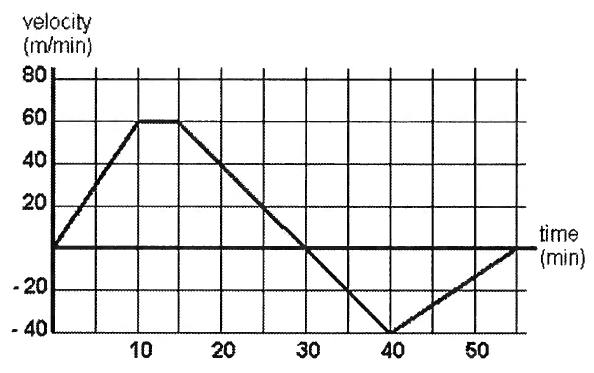TRANSLATIONS AND VECTORS
Using Properties of Translations
A translation is a transformation that maps every two points A and B in the plane to points A' and B', so that the following properties are true.
1. AA' = BB'.
2. AA' ∥ BB' or AA' and BB' are collinear.
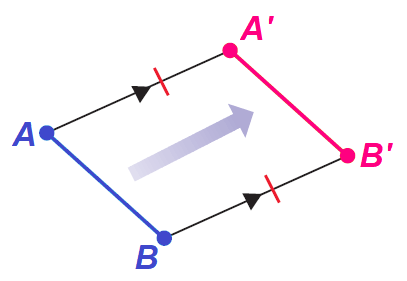
Translation Theorem
A translation is an isometry.
Translation Theorem can be proven as follows.
Given : AA' = BB', AA' ∥ BB'.
Prove : AB = A'B'.
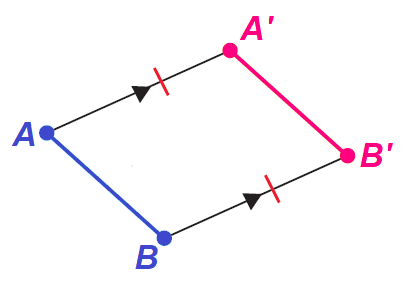
Proof :
The quadrilateral AA'B'B has a pair of opposite sides that are congruent and parallel, which implies AA'B'B is a parallelogram.
From this we can conclude
AB = A'B'
We can find the image of a translation by gliding a figure in the plane. Another way to find the image of a translation is to complete one reflection after another in two parallel lines, as shown.
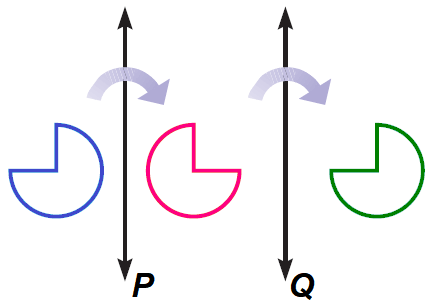
Translations in Parallel Lines -Theorem
If lines k and m are parallel, then a reflection in line m followed by a reflection in line n is a translation. If P" is the image P, then the following is true.
1. PP" is perpendicular to k and m.
2. PP" = 2d, where d is the distance between k and m.
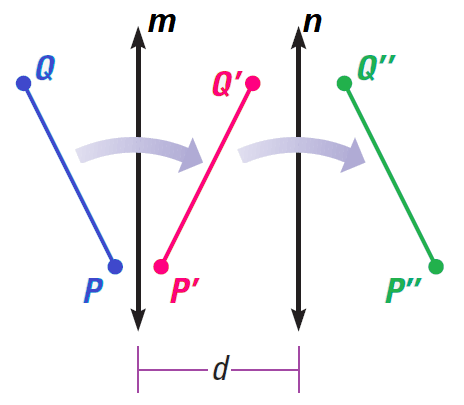
Example 1 :
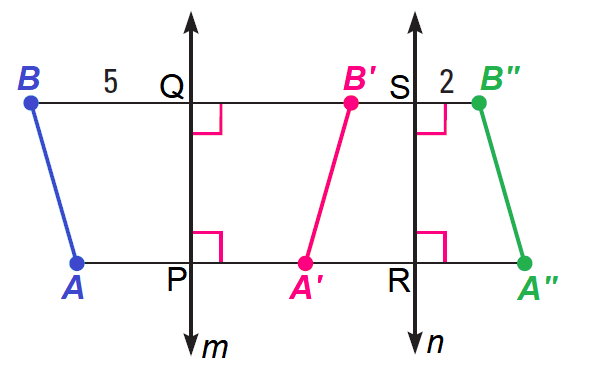
In the diagram shown above, a reflection in line m maps AB to A'B', a reflection in line n maps A"B" to A"B" and
m ∥ n, HB = 5 and DH" = 2
a. Name some congruent segments.
b. Does AC = BD? Explain.
c. What is the length of GG"?
Solution (a) :
Here are some sets of congruent segments :
AB, A'B' and A"B"
BQ and B'Q
B'S and B"S
Solution (b) :
Yes, PR = QS because PR and QS are opposite sides of a rectangle.
Solution (c) :
Because, AA" = BB", the length of AA" is
= 5 + 5 + 2 + 2
= 14 units
Translations in a Coordinate Plane
Translations in a coordinate plane can be described by the following coordinate notation :
(x, y) ----> (x + a, y + b)
where a and b are constants. Each point shifts a units horizontally and b units vertically.
Example 2 :
Describe the translation in the coordinate plane shown below.
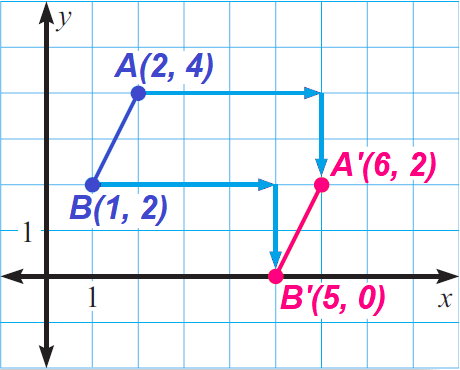
Solution :
In the coordinate plane shown above, the translation is
(x, y) ----> (x + 4, y - 2)
That is, the translation in the coordinate plane above shifts each point 4 units to the right and 2 units down.
Translations and Vectors
Another way to describe a translation is by using a vector. A vector is a quantity that has both direction and magnitude, or size, and is represented by an arrow drawn between two points.
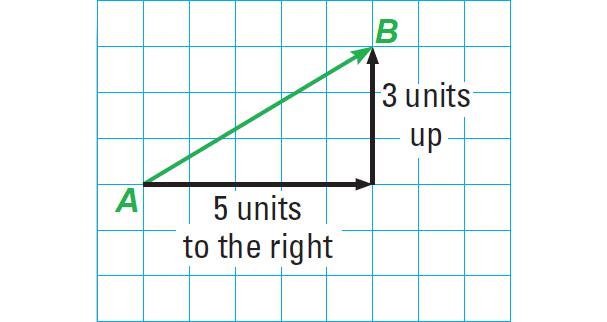
The diagram above shows a vector. The initial point or starting point of the vector is A and the terminal point or ending point is B. The vector is named AB which is read as "vector AB". The horizontal component of AB is 5 and the vertical component of AB is 3.
The component form of a vector combines the horizontal and vertical components. So, the component form of AB is
〈5, 3〉
Kindly mail your feedback to v4formath@gmail.com
We always appreciate your feedback.
©All rights reserved. onlinemath4all.com
Recent Articles
-
AP Calculus AB Problems with Solutions (Part - 19)
Apr 24, 25 11:10 PM
AP Calculus AB Problems with Solutions (Part - 19) -
AP Calculus AB Problems with Solutions (Part - 18)
Apr 24, 25 11:06 PM
AP Calculus AB Problems with Solutions (Part - 18) -
Derivative of Absolute Value of x Using Limit Definition
Apr 23, 25 11:11 AM
Derivative of Absolute Value of x Using Limit Definition
